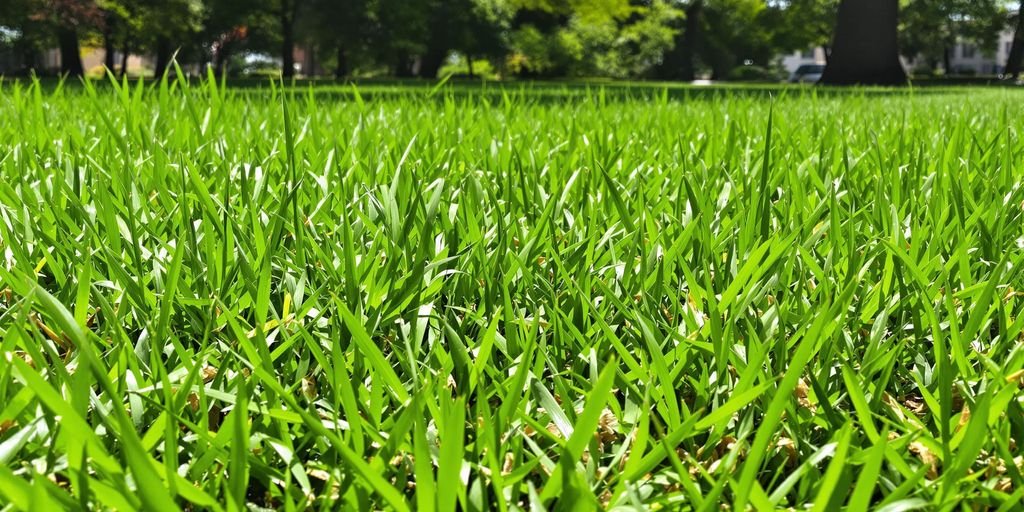
Aerating your lawn is one of those things most people don’t think about until their grass starts looking sad. But if you live in Sacramento, timing is everything. The area’s unique climate and soil conditions mean picking the right season can make all the difference for a healthier, greener lawn. So, when is the best time to Aerate your lawn in Sacramento? Let’s break it down.
Key Takeaways
- Lawn aeration helps improve soil and grass health by allowing air, water, and nutrients to reach the roots.
- Sacramento’s climate makes fall the best time for aeration, while spring can work too, but summer should be avoided.
- Signs your lawn needs aeration include compacted soil, poor grass growth, and water pooling on the surface.
- Prepare your lawn by mowing and lightly watering before aerating, and choose the right tools for the job.
- After aeration, overseed, water properly, and fertilize to encourage strong, healthy growth.
Understanding Lawn Aeration and Its Benefits
What Is Lawn Aeration?
Lawn aeration is the process of creating small holes in your lawn to allow air, water, and nutrients to penetrate the soil. These holes are typically made using a tool called a core aerator, which removes small plugs of soil. By opening up the soil, aeration helps your grass roots grow deeper and stronger. This simple yet effective practice is a game-changer for maintaining a lush, green lawn.
How Aeration Improves Soil Health
Aeration works wonders for soil health by addressing common issues like compaction and poor drainage. Compacted soil can suffocate your lawn, making it hard for grass roots to access what they need. Aeration alleviates these problems, making it easier for essential resources like water, nutrients, and oxygen to reach the roots. Over time, this leads to healthier soil, better grass growth, and a lawn that can withstand stress from foot traffic or weather changes.
Why Aeration Is Crucial for Sacramento Lawns
In Sacramento, where the soil often leans toward clay and the summers can be brutally hot, aeration is especially important. Clay soil tends to compact easily, which can choke your lawn and lead to water runoff instead of absorption. Regular aeration not only helps with soil compaction but also improves water retention, making it easier for your lawn to thrive even during the dry months. Aeration alleviates soil compaction, allowing your lawn to soak up every drop of water and nutrient it gets, which is vital for keeping it green and healthy year-round.
Factors That Influence the Timing of Lawn Aeration
The Role of Sacramento’s Climate in Aeration
Sacramento’s climate plays a big part in deciding when to aerate your lawn. With its hot, dry summers and mild, wet winters, timing is everything. Aerating during the wrong season can actually harm your lawn instead of helping it. The best approach is to work with the natural growth cycles of your grass. For cool-season grasses, focus on early fall or spring when temperatures are moderate. For warm-season grasses, late spring to early summer is ideal, right before the peak growing season.
How Soil Type Affects Aeration Timing
Not all soil is created equal, and that matters when it comes to aeration. If your lawn has clay-heavy soil, it tends to compact more easily, making it a strong candidate for regular aeration. Sandy soils, on the other hand, may not need aeration as often. A quick test: stick a screwdriver into the ground. If it’s tough to push in, your soil is compacted and ready for aeration. Keep in mind, clay soils often benefit from aeration in the fall, while sandy soils might do better in the spring.
Seasonal Considerations for Lawn Aeration
The time of year matters just as much as the soil type and climate. Sacramento’s summers are too hot and dry for effective aeration, as the grass is often stressed and won’t recover well. Fall is usually the sweet spot, especially for cool-season grasses, since the weather is cooler, and soil moisture is higher. Spring can work too, but it’s a bit of a gamble—if you aerate too late, you risk letting weeds take over. Avoid winter altogether, as the soil is often too wet, and aerating then could cause more harm than good.
Timing your lawn aeration isn’t just about the calendar—it’s about reading your lawn and understanding its unique needs. With the right timing, you’ll set the stage for healthier, greener grass.
“Ensuring your lawn gets the right care at the right time can make all the difference in achieving a lush, healthy yard. If you’re unsure about when or how to aerate your lawn in Sacramento, we’re here to help! Contact us today for expert advice, professional lawn care services, and tailored solutions to keep your grass thriving year-round.”
Best Seasons for Aerating Lawns in Sacramento

Why Fall Is Ideal for Aeration
Fall is hands-down the best time to aerate your lawn in Sacramento. The cooler weather and increased moisture levels create the perfect environment for grass to recover and grow stronger. Aerating in the fall gives your lawn a head start before winter dormancy. Plus, with fewer weeds competing for nutrients, grass roots can expand more easily. If you’re planning to overseed, fall aeration ensures the seeds make solid contact with the soil for better germination.
Spring Aeration: Pros and Cons
Spring can work as a backup option if you miss the fall window. The mild temperatures and consistent rainfall help the lawn recover after aeration. However, there’s a catch: spring is also the time when weeds like crabgrass start to sprout. Aerating can unintentionally give these weeds a boost. To avoid this, consider applying a pre-emergent herbicide after aeration. Spring aeration is best for lawns that show signs of compaction early in the year.
Avoiding Aeration During Sacramento’s Hot Summers
Sacramento summers are brutal, and aerating during this time is a big no-no. The heat stresses the grass, and aeration can make things worse by exposing roots to the scorching sun. Instead, focus on summer lawn care tips like proper watering and mowing to keep your lawn healthy. If you aerate in summer, you risk damaging your lawn instead of helping it. Save aeration for the cooler months when your grass has the best chance to thrive.
Signs Your Lawn Needs Aeration
Identifying Compacted Soil
One of the clearest signs your lawn needs aeration is compacted soil. If the ground feels hard underfoot or you struggle to push a screwdriver or similar tool into the soil, it’s likely compacted. Compacted soil restricts the flow of air, water, and nutrients to the grass roots, which can cause your lawn to struggle. Healthy soil should feel soft and slightly springy.
Spotting Poor Grass Growth
If your grass looks patchy or grows unevenly, aeration might be the solution. Poor grass growth can happen when roots don’t get enough oxygen or nutrients due to dense soil. You might notice some areas of your lawn are lush while others are thin and weak. This unevenness is often a red flag that aeration is overdue.
Recognizing Water Runoff Issues
Does water pool on your lawn after you water it or after it rains? Or maybe it runs off your yard too quickly? Both are signs of soil compaction. Aerating your lawn helps water penetrate the ground more effectively, reducing runoff and ensuring the roots get the moisture they need.
A well-aerated lawn breathes better, absorbs water efficiently, and grows stronger. If your lawn is struggling, aeration could be the first step toward bringing it back to life.
“If your lawn has dead patches, aeration helps, but full recovery takes more. Check out our guide on reviving dead grass in Sacramento for expert tips on restoring a lush lawn.”
Preparing Your Lawn for Aeration
Mowing and Watering Before Aeration
Before you start aerating, mowing your lawn to a shorter height is a smart move. Aim for about 1-1.5 inches—this makes it easier for the aerator to penetrate the soil. Don’t cut it too short, though; you don’t want to stress the grass. Watering the lawn a day or two before aeration is crucial. Moist soil is much easier to work with than dry, compacted soil. But don’t overdo it—soggy ground can clog the aerator and make a mess.
Choosing the Right Aeration Tools
Picking the right tools depends on the size of your lawn and your budget. For smaller yards, a manual aerator can do the job. It’s a bit of a workout, but it’s effective. For larger spaces, renting a core aerator is worth considering. These machines pull out plugs of soil, allowing air, water, and nutrients to reach the roots. Spike aerators are another option, but they’re less effective because they compact the soil around the holes rather than removing it.
Scheduling Aeration for Maximum Effectiveness
Timing is everything when it comes to aeration. In Sacramento, the best times are typically September or April, as these months provide ideal growing conditions for grass recovery. Aerating during these periods ensures your lawn has the time it needs to bounce back and thrive. Avoid aerating during extreme heat or cold, as this can stress the grass and reduce the benefits of the process.
Aerating your lawn isn’t just about punching holes in the ground—it’s about giving your grass the best chance to grow strong and healthy. Plan ahead, use the right tools, and your lawn will thank you.
“Want to give your lawn the care it deserves? Call us for expert lawn aeration services in Sacramento and keep your grass healthy year-round!”
Post-Aeration Lawn Care Tips
Overseeding After Aeration
After aerating your lawn, it’s the perfect time to overseed. Those tiny holes created during aeration provide an ideal spot for grass seeds to settle, giving them better contact with the soil. Pick a seed blend that matches your grass type and climate. Spread the seed evenly across your lawn, focusing on any bare or thin patches. Lightly rake over the area to ensure the seeds make good contact with the soil. This step can dramatically improve the thickness and health of your lawn over time.
Proper Watering Techniques Post-Aeration
Watering after aeration is key to helping your lawn recover and thrive. Start by giving the lawn a gentle soak to encourage the soil to settle and the grass roots to absorb moisture. Avoid overwatering, as this can wash away seeds if you’ve overseeded. A good rule of thumb is to water lightly every day for the first week, then gradually shift to a deeper, less frequent schedule. This helps the roots grow deeper and stronger into the soil.
Fertilizing for Enhanced Growth
To really give your lawn a boost, apply a quality fertilizer after aeration. Fertilizer provides the nutrients your grass needs to grow lush and green. Choose a balanced fertilizer, ideally one designed for your specific grass type. Apply it evenly using a spreader, and make sure to follow the instructions on the bag to avoid over-fertilizing. For example, begin the growing season by fertilizing your lawn in early spring to replenish nutrients lost over winter.
Taking the time to care for your lawn after aeration ensures all the effort you put into aerating doesn’t go to waste. A little extra attention now can mean a healthier, more vibrant lawn for months to come.
Common Mistakes to Avoid During Lawn Aeration

Aerating at the Wrong Time
Timing is everything when it comes to lawn aeration. Aerating during the wrong season can cause more harm than good. For example, aerating in the heat of Sacramento’s summer can stress your lawn, while doing it too late in winter might not give your grass enough time to recover. Aim for the cooler seasons like early fall or spring when the grass is actively growing and can heal quickly.
Using the Wrong Equipment
Not all aeration tools are created equal. Using unsuitable equipment, like a spike aerator instead of a core aerator, can actually compact the soil further instead of relieving it. A core aerator, which removes small plugs of soil, is your best bet for improving soil health. If you’re unsure, consider renting a professional-grade machine or hiring a service to avoid costly mistakes. Learn more about avoiding errors with aeration and overseeding.
Neglecting Post-Aeration Care
Aeration isn’t a one-and-done task. After aerating, your lawn needs extra care to thrive. Skipping essential steps like overseeding, watering, or fertilizing can leave your lawn patchy and weak. Always follow up aeration with proper lawn care to maximize its benefits. Think of it as setting the stage for a healthier, more vibrant lawn.
Wrapping It Up
So, when it comes to aerating your lawn in Sacramento, timing really does matter. If you stick to the cooler months, like early spring or fall, your grass will thank you by growing thicker and healthier. It’s not rocket science—just keep an eye on the weather and avoid the hottest parts of the year. A little planning goes a long way, and before you know it, you’ll have a lawn that’s the envy of the neighborhood. Happy aerating!
Frequently Asked Questions
What is lawn aeration and why is it important?
Lawn aeration is the process of poking small holes in the soil to let air, water, and nutrients reach the roots. It’s important because it helps the grass grow stronger and healthier.
When is the best time to aerate my lawn in Sacramento?
The best time to aerate in Sacramento is usually in the fall when the weather is cooler and the grass is actively growing.
Can I aerate my lawn in the summer?
It’s not a good idea to aerate in the summer because the heat can stress the grass and slow its recovery.
How can I tell if my lawn needs aeration?
Signs include hard, compacted soil, water pooling on the surface, or grass that looks thin and weak.
What should I do after aerating my lawn?
After aerating, you should water the lawn, spread grass seeds, and add fertilizer to help the grass grow.
Do I need special tools to aerate my lawn?
Yes, you can use a machine called a core aerator or even simple tools like a spike aerator to do the job.
“Timing is key for a healthy lawn! Call us today to schedule professional aeration services in Sacramento and give your grass the best start for optimal growth.”

